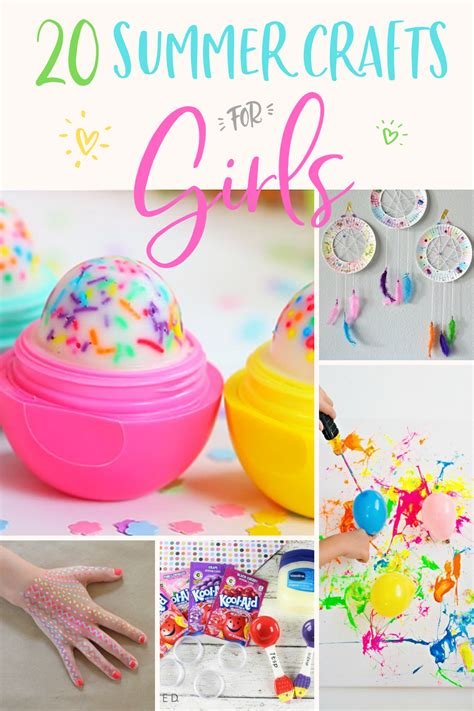Top DIY Photography Tips and Ideas for Stunning Photos
Are you looking to take your photography skills to the next level with some do-it-yourself techniques? In this blog post, we’ll explore the top DIY photography tips and ideas to help you capture stunning photos with your own creative flair. From choosing the right camera and essential equipment to mastering lighting techniques and creative composition tips, we’ve got you covered. We’ll also delve into different photography styles and themes, as well as post-processing tricks to enhance your DIY photos. Plus, we’ll share tips for capturing candid moments and emotions, creating DIY props and backgrounds, and shooting stunning landscapes and nature. Whether you’re a beginner or a seasoned photographer, these DIY photography tips will inspire you to create unique and breathtaking images that showcase your personal style. So grab your camera, get ready to unleash your creativity, and let’s dive into the world of DIY photography!
Choosing the Right Camera for DIY Photography
When it comes to DIY photography, choosing the right camera is essential for capturing high-quality images. The camera you select will greatly impact the outcome of your photos, so it’s important to consider your options carefully.
One key factor to consider when choosing a camera for DIY photography is the type of photography you plan to focus on. For example, if you’re primarily interested in landscape and nature photography, you may want to invest in a DSLR camera with a high-quality sensor and interchangeable lenses. On the other hand, if you’re more interested in capturing candid moments and emotions, a mirrorless camera with fast autofocus and compact size may be a better fit.
Another important consideration is your budget. While there are many high-end cameras available on the market, you don’t necessarily need to break the bank to get started with DIY photography. There are plenty of affordable options that still offer great image quality and features to help you learn and grow as a photographer.
Ultimately, the best camera for DIY photography is one that feels comfortable in your hands, suits your shooting style, and allows you to capture the images you envision. Take the time to research and test out different cameras to find the perfect fit for your creative journey.
Essential Equipment for DIY Photography
When it comes to DIY photography, having the right equipment is essential for capturing stunning images. Whether you’re a beginner or a seasoned photographer, investing in the right gear can make a significant difference in the quality of your photos. From cameras to lenses, tripods, and lighting equipment, here are some essential pieces of equipment to consider for your DIY photography endeavors.
First and foremost, a high-quality camera is the most important tool for any DIY photographer. While smartphones have made significant advancements in camera technology, a dedicated DSLR or mirrorless camera can offer greater control over settings and produce higher resolution images. Consider investing in a camera body that suits your photography style and budget.
In addition to a camera, having a selection of lenses is crucial for capturing different perspectives and achieving various visual effects. A versatile zoom lens and a prime lens are great starting points, allowing you to experiment with different focal lengths and apertures. Having a range of lenses in your kit can greatly expand your creative possibilities.
When it comes to tripods and supports, stability is key for achieving sharp, well-composed images. A sturdy tripod is essential for long exposure photography, landscape shots, and self-portraits. Furthermore, investing in a tripod with adjustable legs and a tilting center column can provide flexibility in capturing unique angles and perspectives.
Mastering Lighting Techniques for Stunning Photos
Mastering the art of lighting is essential for creating stunning photos. Whether you are a beginner or a seasoned photographer, understanding how to manipulate light can make a significant difference in the quality of your images. One of the most basic but powerful lighting techniques is the use of natural light. Learning to take advantage of the golden hour, when the sun is low in the sky, can result in soft, warm, and captivating photos.
Another important lighting technique to master is the use of artificial lighting. This includes using studio lights, flash, and reflectors to add depth and drama to your photos. Understanding how to position and manipulate these artificial sources of light can elevate your photography to the next level.
Additionally, mastering lighting ratios is crucial for controlling the mood and atmosphere of your photos. Learning to balance the intensity and contrast of different light sources can help you create dynamic and visually striking images.
Furthermore, understanding color temperature and how it can impact the mood of your photos is essential for mastering lighting techniques. By experimenting with different color temperatures, photographers can create unique and impactful images that resonate with their audience.
Creative Composition Tips for DIY Photography
When it comes to DIY photography, the way you arrange and compose your subjects can make or break a photo. One of the most important creative composition tips is to use the rule of thirds. This means dividing your frame into three equal parts both horizontally and vertically, and placing your subject or points of interest along these lines or at their intersections. This can create a more dynamic and visually appealing image.
Another essential tip for creative composition is to pay attention to leading lines. These are lines within the image that draw the viewer’s eye towards the main subject or point of interest. Examples of leading lines include roads, fences, or even natural elements like tree branches. By incorporating leading lines into your compositions, you can guide the viewer’s gaze and create a sense of depth in your photos.
Additionally, experiment with perspective and angles to add visual interest to your photos. Try getting down low and shooting from a low angle to create a more dramatic effect, or experiment with bird’s eye view shots for a unique perspective. Varying your shooting angles can help you capture more dynamic and compelling compositions.
Finally, don’t be afraid to break the rules and embrace unconventional compositions. Sometimes, the most striking photos are the ones that defy traditional composition guidelines. Use your creativity and intuition to experiment with different compositions and see what works best for your unique style of DIY photography.
Exploring Different Photography Styles and Themes
Photography is an incredibly versatile art form that allows for endless creativity and expression. As a DIY photographer, it’s important to explore different photography styles and themes to find your own unique voice and vision. Whether you prefer portrait, landscape, street, or experimental photography, there are countless styles and themes to discover and experiment with.
One of the most popular photography styles is portrait photography, which focuses on capturing the personality and essence of the subject. This style often requires excellent lighting and composition skills to create stunning and emotive images. On the other hand, landscape photography involves capturing the beauty and vastness of natural environments, requiring a keen eye for detail and a deep understanding of light and color.
For those interested in capturing the energy and spontaneity of everyday life, street photography is a compelling style to explore. It often involves capturing candid moments and emotion in urban environments, showcasing the raw and unfiltered human experience. Experimental photography is another captivating style that allows photographers to push the boundaries of traditional image-making, using techniques like double exposures, long exposures, and alternative processing methods.
When it comes to photography themes, there are endless possibilities to explore. From capturing the beauty of nature to delving into thought-provoking conceptual projects, the choice of themes can greatly impact the mood and message of your images. Whether you’re drawn to themes like minimalism, urban decay, abstract, or documentary photography, each theme offers its own unique set of challenges and opportunities for creative expression.
Post-Processing Tricks to Enhance Your DIY Photos
When it comes to enhancing your DIY photos, post-processing can make a huge difference in the final result. One of the most important post-processing tricks is to adjust the exposure of your photos. Whether it’s brightening up a dark image or toning down an overexposed shot, getting the exposure just right can transform the entire feel of the photograph.
Another crucial post-processing technique is color correction. This involves adjusting the colors in your photos to make them more vibrant and true to life. Whether you’re working with a dull image that needs a pop of color or trying to achieve a specific mood with a color scheme, mastering color correction can take your DIY photography to the next level.
Furthermore, sharpening and noise reduction are vital post-processing tricks. Sharpening can help to bring out the fine details in your photos, while noise reduction can help to eliminate graininess in low-light or high ISO shots. Both techniques can significantly improve the overall quality of your DIY photos.
Lastly, applying creative filters and effects during post-processing can add a unique touch to your images. Whether it’s adding a vintage flair, creating a moody atmosphere, or experimenting with artistic effects, using filters and effects can give your DIY photos a distinctive and professional look.
Capturing Candid Moments and Emotions
Title: Capturing Candid Moments and Emotions
content:
When it comes to photography, capturing candid moments and genuine emotions is one of the most rewarding aspects of the art form. Whether you’re photographing friends and family or documenting a special event, candid shots have the power to tell a story and evoke genuine emotions in the viewer.
One of the key techniques for capturing candid moments is to blend in with the surroundings and be as unobtrusive as possible. This means using a zoom lens to capture intimate moments from a distance without disrupting the natural flow of events.
Another important aspect is to always be ready and observant. You never know when a genuine, fleeting moment will present itself, so it’s essential to keep your camera at the ready and constantly be on the lookout for those unscripted moments of emotion and connection.
In addition to the technical skills required, it’s also crucial to make a personal connection with your subjects and gain their trust. Building rapport with the people you are photographing will allow you to capture their true emotions and candid moments in a more authentic way.
Creating DIY Props and Backgrounds for Unique Photos
When it comes to DIY photography, creating your own props and backgrounds can take your photos to the next level. By using unique and personalized elements in your photography, you can add depth and interest to your images. Whether you’re a professional photographer looking to add a personal touch to your work, or an amateur looking to experiment with new creative techniques, creating DIY props and backgrounds can enhance the overall quality of your photos.
One of the key benefits of creating your own props and backgrounds is the ability to customize them to suit your specific photographic style. Whether you prefer vibrant and colorful scenes, or moody and dramatic settings, the options are endless when you create your own customized props and backgrounds. From simple handmade backdrops to elaborate DIY props, the possibilities are only limited by your imagination.
Additionally, creating DIY props and backgrounds can be a cost-effective way to add variety to your photography. Instead of purchasing expensive props and backgrounds, you can create your own using affordable materials and simple crafting techniques. This not only saves money, but also allows you to experiment with different styles and themes without breaking the bank.
In conclusion, creating DIY props and backgrounds for your photography can add a personal touch, customization, and affordability to your work. By experimenting with different materials, crafting techniques, and styles, you can enhance the overall quality of your photos and create truly unique and captivating images.
Tips for Shooting Stunning Landscapes and Nature
When it comes to shooting stunning landscapes and nature, there are a few key tips to keep in mind in order to capture the best possible images. One of the most important factors to consider is the time of day. Early morning and late afternoon tend to offer the best natural light for landscape photography, with the sun casting a warm, golden glow across the scenery. This can help to create a more dramatic and visually appealing image, bringing out the textures and colors of the landscape.
Another essential tip is to carefully consider your composition. Look for leading lines or natural framing elements that can help draw the viewer’s eye into the scene. Consider the rule of thirds, where you divide your frame into nine equal sections and place your points of interest at the intersections or along the lines, to create a more balanced and visually pleasing composition.
Additionally, it’s important to pay attention to the weather and the overall mood of the landscape. While bright, sunny days can be ideal for certain types of photography, overcast or misty days can create a more atmospheric and moody effect, adding a sense of drama to your images. Don’t be afraid to experiment with different weather conditions and lighting situations to capture the unique personality of the landscape and nature you are photographing.
Lastly, investing in the right gear, such as a sturdy tripod to keep your camera steady, or a set of quality filters to control exposure and color balance, can greatly enhance the quality of your landscape and nature photographs. With these essential tips in mind, you’ll be well on your way to shooting stunning landscapes and nature photos that truly capture the beauty of the world around us.
Frequently Asked Questions
What type of camera should I choose for DIY photography?
When choosing a camera for DIY photography, consider your budget, the type of photography you want to do, and the camera’s features. Some popular options include DSLR, mirrorless, and point-and-shoot cameras.
What essential equipment do I need for DIY photography?
Essential equipment for DIY photography includes a tripod, various lenses, external flash, reflectors, and memory cards. A good camera bag and cleaning kit are also important for keeping your gear in top condition.
How can I master lighting techniques for stunning DIY photos?
Mastering lighting techniques involves understanding natural light, using artificial light sources, and manipulating light to create the desired mood and atmosphere in your photos. Experimenting with different lighting setups and learning to control exposure is also important.
What are some creative composition tips for DIY photography?
To create visually striking photos, consider using the rule of thirds, leading lines, framing, and negative space. Experiment with different perspectives and angles to create unique compositions.
How can I enhance my DIY photos through post-processing?
Post-processing is a crucial step in DIY photography. Use editing software to adjust exposure, color balance, and contrast. Experiment with different filters and effects to add a creative touch to your photos.
What are some tips for shooting stunning landscapes and nature in DIY photography?
When shooting landscapes and nature, pay attention to composition and use a wide-angle lens to capture the expansive beauty of the scenery. Consider the time of day and weather conditions to achieve the best results.
How can I create DIY props and backgrounds for unique photos?
Get creative and make your own props and backgrounds using household items, fabrics, and crafting materials. This will add a unique and personal touch to your DIY photography projects.






